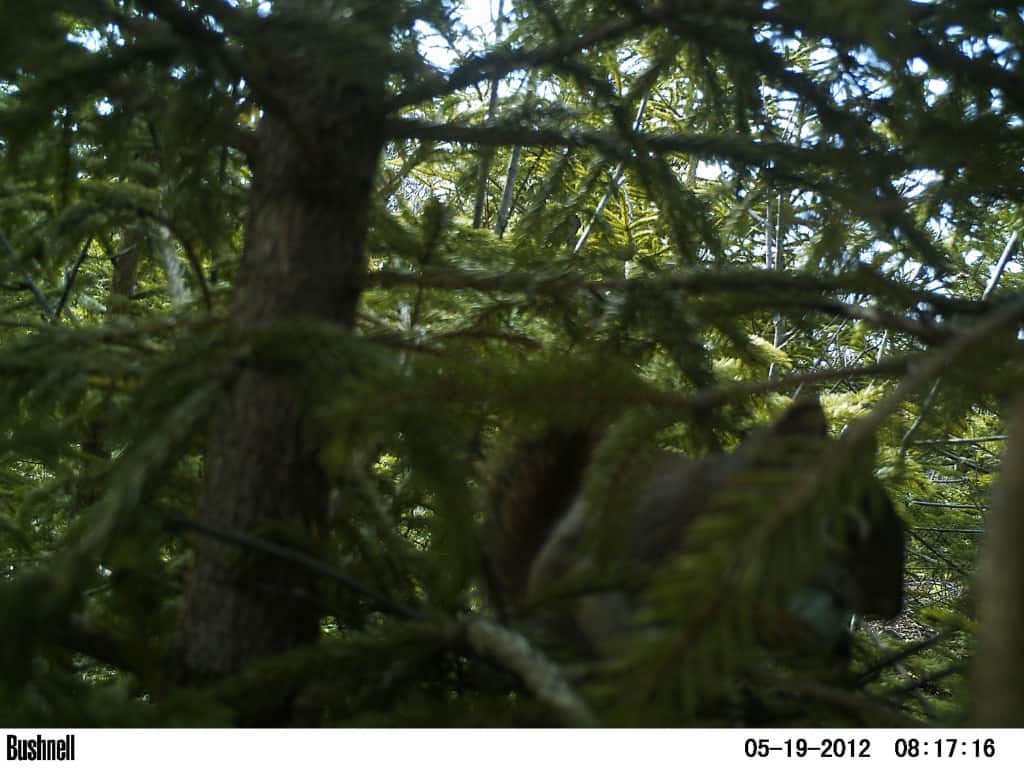Share this article
Red Squirrels Hinder Rusty Blackbird Recovery
Shannon Luepold had to cross rickety old bridges, endure flat tires and fight off black flies and other biting insects in order to conduct her research on rusty blackbirds (Euphagus carolinus) — a North American songbird that is still recovering from steep population declines in the 1960s and ‘70s. She was even stranded in a remote boreal forest one night after her 4×4 got stuck in the mud. “This made it more exciting along the way,” she said.
Luepold is lead author of a recent study published in The Condor: Ornithological Advances that examines the breeding ecology and nest predation of rusty blackbirds in Maine and New Hampshire. As part of the study, the researchers, including the Maine Department of Inland Fisheries and Wildlife, the Audubon Society of New Hampshire and Stacy McNulty, Luepold’s graduate advisor at the State University of New York College of Environmental Science and Forestry, installed motion-triggered cameras at 29 rusty blackbird nests that they found tucked away in the remote forests of northern Maine and New Hampshire.
After reviewing the photographs, the team detected a white-tailed deer, a hawk and a blue jay preying on nests, but they mostly detected the rusty blackbirds most prominent predator — the red squirrel. The team also noted that spruce and fir cone production was higher in 2011, which correlated with higher numbers of squirrels that consume the cones in 2012. As a result, there was more squirrel predation on rusty blackbirds in the second year of the study. “There are abundant cones in some years and low cone production in other years,” Luepold said. While squirrel predation isn’t necessarily responsible for the decline in blackbird populations, according to Luepold, “it makes it more difficult for them to recover.”

One of the photos taken from the motion-triggered camera shows a red squirrel preying on eggs in a rusty blackbird nest. Image Courtesy: Shannon Luepold
The researchers also measured vegetation and other habitat variables around blackbird nests to determine their impact on nest success. They found that dense vegetation was the most important predictor of nest survival. As a result, Luepold suggests that practices such as pre-commercial thinning — thinning trees before they are a marketable size to favor the growth of select trees — could potentially negatively impact nest survival since this reduces tree density.
However, the team didn’t find evidence that timber harvesting or clear cutting has an adverse effect on nest survival. “The take home message is that the effects of timber harvesting are more nuanced, and it’s not all bad or all good,” Luepold said. “It’s more complex than that. In terms of nest survival, it seems that ecological factors such as cone and predator cycles have more of an impact than whether the nest is in a regenerating clear cut or not.”
Luepold also said that the songbirds likely have been losing habitat on their wintering grounds or throughout their migration, which is something that needs to be studied further.
Header Image: A rusty blackbird nest. Image Credit: Shannon Luepold








